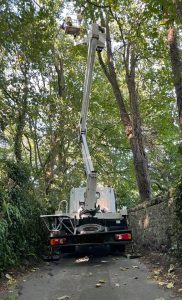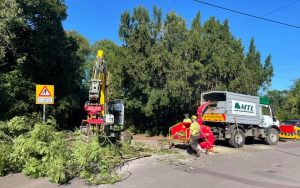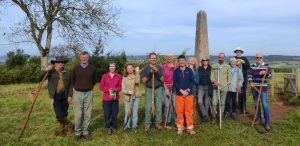The fight against ash dieback, a highly-destructive disease that threatens ash trees throughout the UK, is being placed at the forefront of conservation efforts thanks to a grant from the Tarmac Landfill Communities Fund.
A donation of £35,000 to Backwell Environment Trust (BET) is helping to manage the impact of the creeping disease that has swept through swathes of woodland next to Tarmac’s Stancombe Quarry, near Bristol.
Whilst it is impossible to save those trees that are affected, the trust and its volunteers are trying to reduce the risk from dying and falling trees in order to keep the woods open to the public and, eventually, restock with new saplings.
Ian Chambers, reserves manager at Backwell Environment Trust, said: “Dealing with the consequences of ash dieback disease on our nature reserves has been, by far, the greatest challenge BET has ever faced.
“As the landowner, under both civil and criminal law, we have a clear responsibility for the health and safety of our visitors, road users and neighbours when they use, or pass through our land.
“We are grateful to the Tarmac Landfill Communities Fund for the grant which has helped us cover the cost of felling the most critical roadside trees. As a result, we believe we have addressed the most urgent safety issue and are well-positioned to tackle the next phases of the project.”


With numbers of ash trees affected by the disease increasing rapidly, BET commissioned an independent safety assessment on all trees bordering roads, homes and footpaths in the area.
Initially, only heavily infected trees, whose canopies have thinned by 50 to 100 per cent are being felled – the scientific consensus being that these trees have no chance of long-term survival. Trees exhibiting canopy reductions of less than 50 per cent will be left for the time being and re-assessed on a yearly basis.
“Whilst the short-term impact of removing all the dangerous ash dieback trees from our nature reserves will undoubtedly be considerable, we have been planning for this eventuality for several years,” added Mr Chambers. “A significant number of trees have already been planted and this will continue after the felling.
“With the reduction in some of the high canopy trees, a considerable amount of extra sunlight will be able to reach the woodland floor and so the regeneration of other tree species and ground flora should be very rapid.
“In a very short space of time, the woodlands will recover and become even more wildlife-friendly than before.”
Kyle Smith, Tarmac’s Stancombe Quarry supervisor, said: “Backwell Environment Trust has done a tremendous job in managing the effects of this disease which, if ignored, would be devastating.
“As an environmentally-conscious business we are glad to be able to support conservation work through the Tarmac Landfill Communities Fund.”
 Top – An aerial view of woods at Backwell, next door to Tarmac’s Stancombe Quarry, near Bristol. Areas of the woods have been infected with ash dieback, requiring careful management of the stricken trees. Above – Kyle Smith, Stancombe Quarry supervisor, flanked by volunteers who have been helping to cut down dead trees to safeguard the public and remaining forest.
Top – An aerial view of woods at Backwell, next door to Tarmac’s Stancombe Quarry, near Bristol. Areas of the woods have been infected with ash dieback, requiring careful management of the stricken trees. Above – Kyle Smith, Stancombe Quarry supervisor, flanked by volunteers who have been helping to cut down dead trees to safeguard the public and remaining forest.

